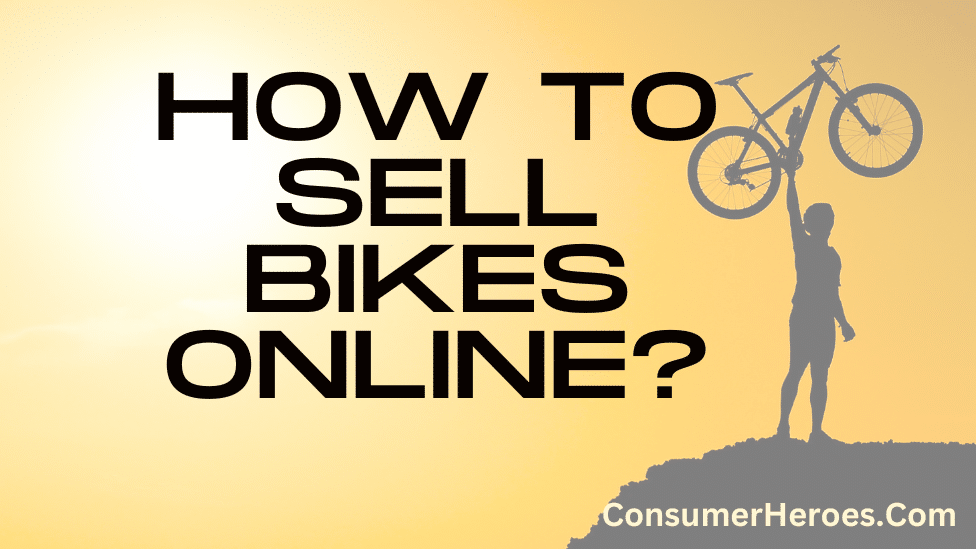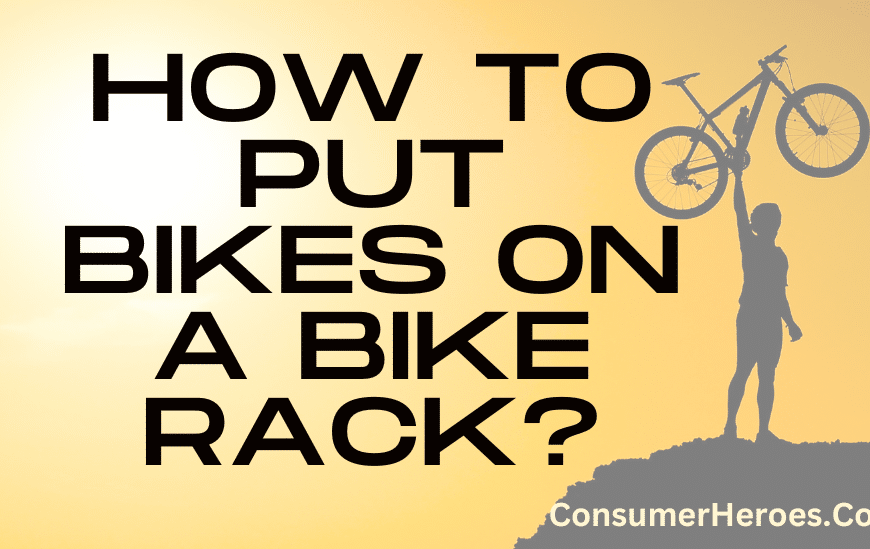Selling bikes online can be a profitable business for those who know how to do it right. With the rise of e-commerce, more and more people are turning to online marketplaces to buy and sell bikes. Whether you’re a bike shop owner or an individual looking to sell your used bike, there are several strategies you can use to increase your chances of success.
One of the first things to consider when selling bikes online is where to list your products. There are several popular online marketplaces, including eBay, Amazon, and Craigslist, as well as specialized bike-selling websites like Pinkbike and Bicycle Blue Book. Each platform has its own advantages and disadvantages, so it’s important to research each one and choose the one that best fits your needs. Additionally, it’s important to create a detailed and accurate listing that includes high-quality photos, a thorough description of the bike’s condition and features, and a competitive price.
Another key strategy for selling bikes online is to leverage social media. By sharing your listings on social media platforms like Facebook, Twitter, and Instagram, you can reach a wider audience and increase the chances of finding a buyer. Additionally, you can join online bike communities and forums to connect with potential buyers and build your reputation as a trusted seller. By following these tips and staying up-to-date on the latest trends and best practices in online bike sales, you can successfully sell your bikes online and grow your business.
Understanding Your Target Market
Identifying Potential Buyers
Before you start selling bikes online, it’s important to identify your potential buyers. This will help you tailor your marketing efforts and product offerings to meet their needs.
One way to identify potential buyers is to look at demographics. For example, if you’re selling high-end road bikes, your target market may be middle-aged men with higher incomes. On the other hand, if you’re selling kids’ bikes, your target market may be parents with young children.
Another way to identify potential buyers is to look at their interests. For example, if you’re selling mountain bikes, your target market may be people who enjoy outdoor activities and adventure sports.
Understanding Buyer Preferences
Once you’ve identified your potential buyers, it’s important to understand their preferences. This will help you choose the right products to sell and create marketing messages that resonate with them.
One way to understand buyer preferences is to conduct market research. This can include surveys, focus groups, and online research. For example, you can use social media to gather information about what types of bikes people are interested in, what features they look for, and what price points they’re willing to pay.
Another way to understand buyer preferences is to look at your competitors. What types of bikes are they selling? What features do they highlight in their marketing messages? What price points do they offer?
By understanding your target market and their preferences, you can create a successful online bike selling business that meets their needs and exceeds their expectations.
Choosing the Right Platform
When selling bikes online, choosing the right platform is crucial to ensure maximum exposure and sales. There are two main options to consider: e-commerce websites and social media platforms.
E-commerce Websites
E-commerce websites are dedicated platforms for online sales. They offer a range of features such as secure payment gateways, shipping options, and customer support. Here are some popular e-commerce websites to consider:
- Amazon: Amazon is a well-established platform with a large customer base. It offers various selling plans and tools to help sellers manage their online store effectively.
- eBay: eBay is another popular e-commerce website that allows sellers to list their products for sale. It offers various listing formats and tools to help sellers optimize their listings and reach more buyers.
- Shopify: Shopify is a dedicated e-commerce platform that offers a range of features to help sellers create and manage their online store. It offers various pricing plans and customization options to suit different needs.
When choosing an e-commerce website, consider factors such as fees, features, and customer base to ensure maximum exposure and sales.
Social Media Platforms
Social media platforms can also be used to sell bikes online. They offer a more informal and social approach to online sales. Here are some popular social media platforms to consider:
- Facebook: Facebook is a popular social media platform with a large user base. It offers various tools and features to help sellers create and manage their online store.
- Instagram: Instagram is a visual platform that is ideal for showcasing products such as bikes. It offers various features such as shoppable posts and stories to help sellers promote their products.
- Twitter: Twitter is another social media platform that can be used to promote and sell bikes online. It offers various tools and features to help sellers reach their target audience effectively.
When using social media platforms to sell bikes online, it is important to create a strong brand presence and engage with potential customers to build trust and credibility.
Creating Effective Product Listings
When it comes to selling bikes online, creating effective product listings is essential. A well-crafted listing can help you attract more potential buyers and increase your chances of making a sale. Here are some tips to help you create effective listings that will help you sell your bikes online.
Writing Compelling Descriptions
One of the most important aspects of a product listing is the description. A good description can help potential buyers understand what they are getting and why they should buy it. Here are some tips for writing compelling descriptions:
- Be clear and concise: Use simple language to describe the bike’s features and benefits. Avoid using technical jargon or complicated terms that might confuse potential buyers.
- Highlight the bike’s unique features: If the bike has any unique features or upgrades, make sure to mention them in the description. This can help your listing stand out from others and attract more buyers.
- Use descriptive language: Use descriptive language to help potential buyers visualize the bike. For example, instead of saying “the bike is red,” you could say “the bike has a vibrant, eye-catching red color.”
Taking High-Quality Photos
In addition to a compelling description, high-quality photos are also essential for a successful product listing. Here are some tips for taking great photos of your bikes:
- Use a clean, clutter-free background: A clean, clutter-free background can help the bike stand out and make it easier for potential buyers to see the details.
- Take photos from multiple angles: Take photos of the bike from multiple angles, including the front, back, and sides. This will give potential buyers a better idea of what the bike looks like.
- Use good lighting: Good lighting is essential for taking great photos. Make sure to take photos in a well-lit area or use additional lighting if necessary.
By following these tips, you can create effective product listings that will help you sell your bikes online. Remember to be clear, concise, and descriptive in your descriptions, and use high-quality photos to showcase your bikes’ features and benefits.
Setting Competitive Pricing
Market Research
Before setting prices for your bikes, it is important to conduct market research to understand the current market trends and prices. This will help you determine the right price range for your bikes. You can use online marketplaces and competitor websites to gather this information.
Look for bikes that are similar to yours in terms of brand, model, and features. Analyze their prices and consider any differences in quality or condition. Additionally, consider the demand for bikes in your area and adjust your prices accordingly.
Pricing Strategies
Once you have conducted your research, you can choose a pricing strategy that fits your business goals. Here are some common pricing strategies:
- Cost-plus pricing: This involves adding a markup to the cost of producing the bikes to determine the final price. This strategy ensures that you cover your costs and make a profit.
- Value-based pricing: This strategy considers the perceived value of the bikes to customers. If your bikes have unique features or are of high quality, you can price them higher than competitors.
- Penetration pricing: This involves setting lower prices than competitors to attract customers and gain market share. This strategy is useful when entering a new market or introducing a new product.
- Dynamic pricing: This strategy involves adjusting prices based on demand, supply, and other market factors. This can help you maximize profits and stay competitive.
Remember, pricing is not a one-time decision. You should regularly review and adjust your prices based on market trends and customer feedback. By setting competitive prices, you can attract more customers and increase sales.
Promoting Your Bikes Online
When selling bikes online, it’s important to have a solid promotion strategy in place. Here are two effective ways to promote your bikes online:
Social Media Marketing
Social media is a powerful tool for promoting your bikes online. Platforms like Facebook, Instagram, and Twitter allow you to reach a large audience with minimal effort. Here are a few tips for using social media to promote your bikes:
- Create a business page: Create a dedicated page for your bike business on social media platforms. This will give you a professional presence and make it easier for people to find and follow your business.
- Post regularly: Regularly post high-quality photos and videos of your bikes. This will keep your followers engaged and interested in your products.
- Engage with your followers: Respond to comments and messages from your followers. This will help you build relationships with potential customers and increase the chances of making a sale.
Email Marketing
Email marketing is another effective way to promote your bikes online. Here are a few tips for using email marketing to promote your bikes:
- Build an email list: Collect email addresses from your website visitors and customers. This will allow you to send promotional emails directly to people who have shown an interest in your bikes.
- Create engaging emails: Use eye-catching subject lines and high-quality images to make your emails stand out. Make sure your emails are mobile-friendly and easy to read.
- Offer incentives: Offer discounts or other incentives to encourage people to buy your bikes. This will help you convert email subscribers into paying customers.
By using social media marketing and email marketing, you can effectively promote your bikes online and increase your chances of making a sale.
Handling Transactions Securely
When selling bikes online, it’s important to handle transactions securely to protect both the seller and the buyer. This section will cover payment methods, shipping, and delivery to ensure a safe and secure transaction.
Payment Methods
When it comes to payment methods, it’s important to offer options that are secure and convenient for the buyer. Here are some common payment methods for selling bikes online:
- PayPal: PayPal is a popular payment platform that offers both buyers and sellers protection against fraud.
- Credit card: Credit card payments are a convenient option for buyers, but it’s important to use a secure payment gateway to protect against fraud.
- Bank transfer: Bank transfers are a secure way to receive payment, but they can be less convenient for buyers.
It’s important to clearly communicate accepted payment methods to buyers and to ensure that the payment process is secure and easy to use.
Shipping and Delivery
Shipping and delivery are important considerations when selling bikes online. Here are some tips for ensuring a safe and secure delivery:
- Use a reputable shipping carrier: Choose a shipping carrier with a good reputation for safe and secure delivery.
- Insure the shipment: Insure the shipment to protect against loss or damage during transit.
- Use tracking: Use a tracking number to keep track of the shipment and ensure that it arrives at its destination.
It’s important to clearly communicate shipping and delivery options to buyers and to ensure that the bike is well-packaged for safe transit. By following these tips, sellers can ensure a safe and secure transaction when selling bikes online.
Providing Excellent Customer Service
When it comes to selling bikes online, providing excellent customer service is crucial to building a loyal customer base. Here are some tips for ensuring that your customers have a positive experience with your online bike shop.
Responding to Inquiries
Promptly responding to customer inquiries is essential for building trust and establishing a good reputation. Make sure that you have a system in place for responding to customer inquiries in a timely manner. Here are some tips to keep in mind:
- Provide clear and concise answers to customer questions.
- Be polite and courteous in all of your communications.
- Use templates or canned responses to save time, but personalize them as much as possible.
- Provide detailed information about your products, including specifications, features, and benefits.
- Encourage customers to ask questions and provide feedback.
Handling Complaints and Returns
No matter how good your products or services are, there will always be customers who are unhappy with their purchase. Here are some tips for handling complaints and returns:
- Respond to complaints promptly and professionally.
- Apologize for any inconvenience or dissatisfaction that the customer may have experienced.
- Offer a solution that meets the customer’s needs, whether it’s a refund, exchange, or repair.
- Make the return process as easy and hassle-free as possible.
- Use customer feedback to improve your products and services.
By providing excellent customer service, you can build a loyal customer base and establish a good reputation for your online bike shop. Remember to always be polite, professional, and responsive to your customers’ needs.
Analyzing and Improving Sales
Sales Tracking
To effectively sell bikes online, it is important to track sales and monitor performance. One way to do this is by using analytics tools to measure website traffic, conversion rates, and other key metrics. By analyzing these metrics, sellers can identify areas for improvement and make data-driven decisions to optimize their online store.
Another useful tool for tracking sales is a customer relationship management (CRM) system. A CRM system can help sellers keep track of customer information, purchase history, and communication history. By using this information, sellers can tailor their marketing efforts to specific customers and improve customer retention.
Continuous Improvement
To continuously improve sales, sellers must be willing to experiment and make changes to their online store. This can include testing different pricing strategies, product descriptions, or website layouts. By using A/B testing and other experimentation methods, sellers can identify what works best for their audience and make data-driven decisions to improve their sales.
In addition, sellers should regularly gather feedback from customers to identify areas for improvement. This can be done through surveys, customer reviews, or other feedback channels. By listening to customer feedback and making changes based on their suggestions, sellers can improve customer satisfaction and drive sales.
By tracking sales and continuously improving their online store, sellers can optimize their performance and drive more sales.







